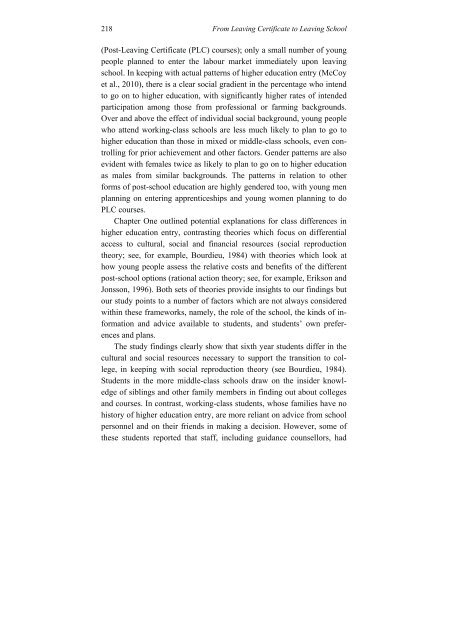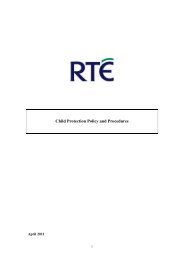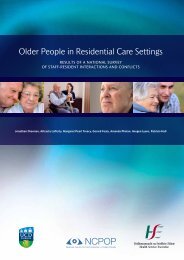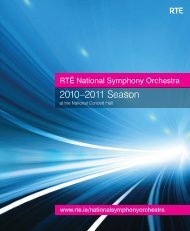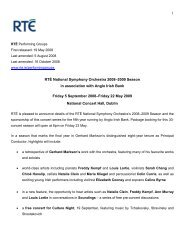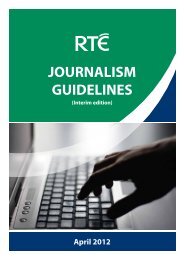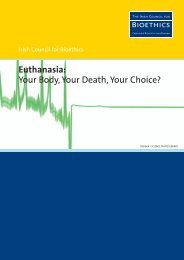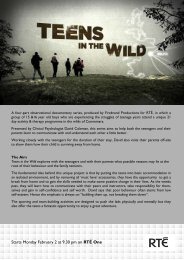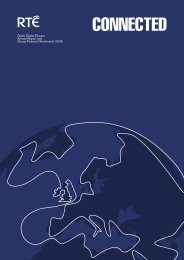From Leaving CertiFiCate to Leaving SChooL a Longitudinal Study ...
From Leaving CertiFiCate to Leaving SChooL a Longitudinal Study ...
From Leaving CertiFiCate to Leaving SChooL a Longitudinal Study ...
Create successful ePaper yourself
Turn your PDF publications into a flip-book with our unique Google optimized e-Paper software.
218<br />
<strong>From</strong> <strong>Leaving</strong> Certificate <strong>to</strong> <strong>Leaving</strong> School<br />
(Post-<strong>Leaving</strong> Certificate (PLC) courses); only a small number of young<br />
people planned <strong>to</strong> enter the labour market immediately upon leaving<br />
school. In keeping with actual patterns of higher education entry (McCoy<br />
et al., 2010), there is a clear social gradient in the percentage who intend<br />
<strong>to</strong> go on <strong>to</strong> higher education, with significantly higher rates of intended<br />
participation among those from professional or farming backgrounds.<br />
Over and above the effect of individual social background, young people<br />
who attend working-class schools are less much likely <strong>to</strong> plan <strong>to</strong> go <strong>to</strong><br />
higher education than those in mixed or middle-class schools, even controlling<br />
for prior achievement and other fac<strong>to</strong>rs. Gender patterns are also<br />
evident with females twice as likely <strong>to</strong> plan <strong>to</strong> go on <strong>to</strong> higher education<br />
as males from similar backgrounds. The patterns in relation <strong>to</strong> other<br />
forms of post-school education are highly gendered <strong>to</strong>o, with young men<br />
planning on entering apprenticeships and young women planning <strong>to</strong> do<br />
PLC courses.<br />
Chapter One outlined potential explanations for class differences in<br />
higher education entry, contrasting theories which focus on differential<br />
access <strong>to</strong> cultural, social and financial resources (social reproduction<br />
theory; see, for example, Bourdieu, 1984) with theories which look at<br />
how young people assess the relative costs and benefits of the different<br />
post-school options (rational action theory; see, for example, Erikson and<br />
Jonsson, 1996). Both sets of theories provide insights <strong>to</strong> our findings but<br />
our study points <strong>to</strong> a number of fac<strong>to</strong>rs which are not always considered<br />
within these frameworks, namely, the role of the school, the kinds of information<br />
and advice available <strong>to</strong> students, and students’ own preferences<br />
and plans.<br />
The study findings clearly show that sixth year students differ in the<br />
cultural and social resources necessary <strong>to</strong> support the transition <strong>to</strong> college,<br />
in keeping with social reproduction theory (see Bourdieu, 1984).<br />
Students in the more middle-class schools draw on the insider knowledge<br />
of siblings and other family members in finding out about colleges<br />
and courses. In contrast, working-class students, whose families have no<br />
his<strong>to</strong>ry of higher education entry, are more reliant on advice from school<br />
personnel and on their friends in making a decision. However, some of<br />
these students reported that staff, including guidance counsellors, had


